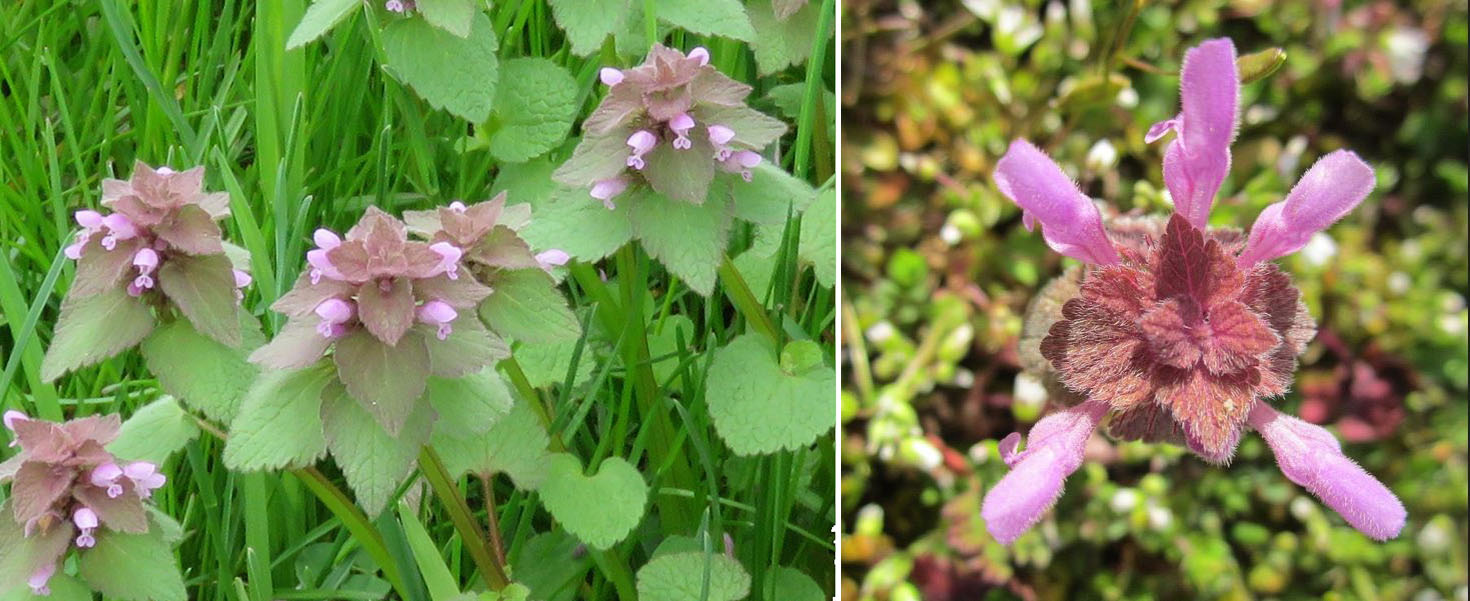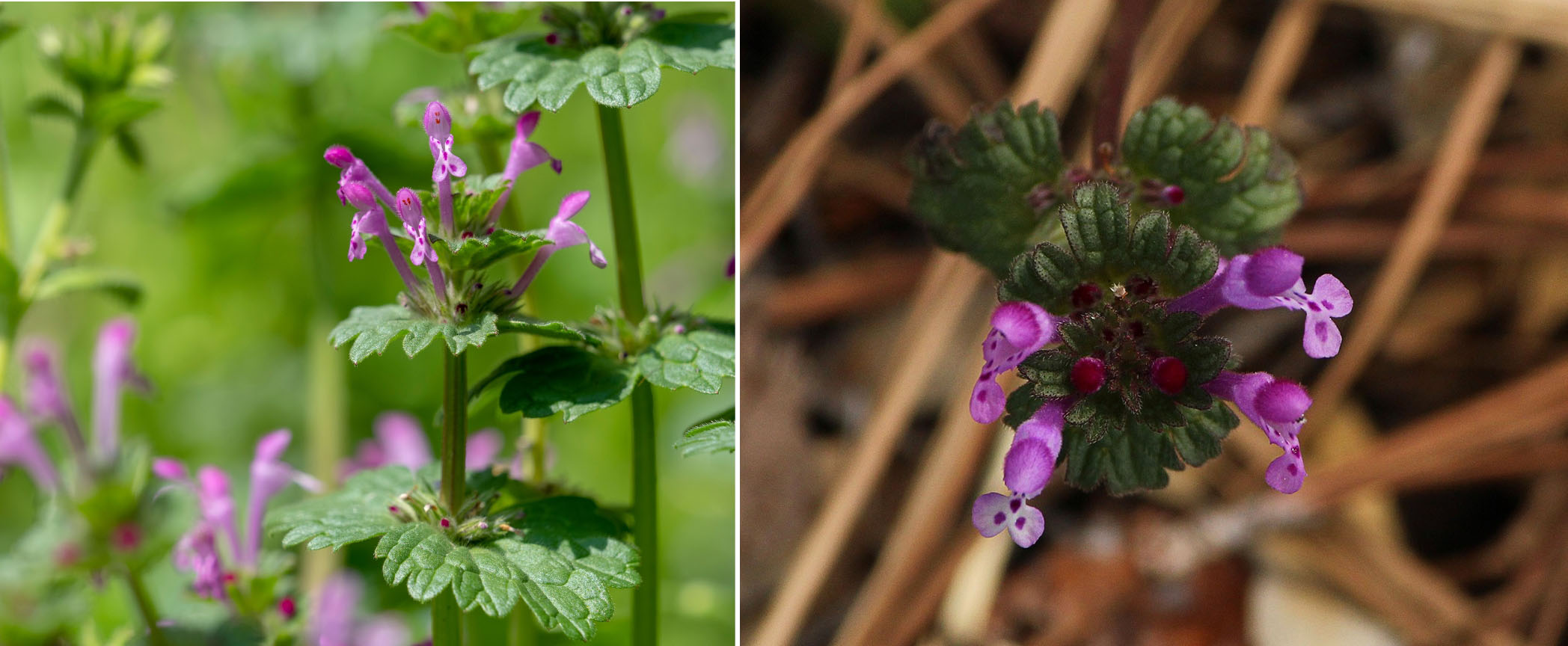Purple deadnettle and henbit: Two common garden spring weeds
Learn to identify and manage two commonly confused members of the mint family.

Purple deadnettle (Lamium purpureum) and henbit (Lamium amplexicaule) are common plants in the mint family that appear for a limited time in spring. They grow in a variety of soils but thrive in areas where the soil has been disturbed, such as fields, gardens and the edges of buildings.
Purple deadnettle and henbit are winter annuals. Winter annuals begin to develop in fall, form a small rosette of leaves that overwinter, and complete their development in spring, forming flowers and seeds. They die in late spring and early summer after setting seeds. Both have two-lipped tubular flowers, opposite leaves and square stems (like other members of the mint family).
The leaves of purple deadnettle at the apex of the stems have a purplish hue and fade to green as they mature. The leaves have a short petiole (stem) and are heart- or triangular-shaped with rounded teeth on the leaf margin. The leaves of henbit are more rounded and scalloped, and the upper leaves clasp the stem directly; they do not have a leaf petiole. Henbit flowers are pink to purple with darker purple spots than those of purple deadnettle. The flowers of henbit are longer and slenderer than those of purple deadnettle.


Pollinators sometimes visit these flowering plants
Purple dead nettle and henbit self-pollinate and can also cross pollinate with bee assistance. Michigan State University (MSU) researchers and staff have observed bee species on purple dead nettle and henbit flowers but know little about the use of their nectar and pollen. Honey bees are known to collect red pollen from purple dead nettle but pollen and nectar usage by other bee species is not well understood. Research in the United Kingdom on bumble bee use of flowers, including purple dead nettle (also known as red dead nettle) and a related species, white deadnettle (Lamium alba), showed high use of white deadnettle but less use of red deadnettle by five different Bombus species, suggesting a minor benefit of purple dead nettle. The role of purple dead nettle and henbit in supporting pollinators may be more related to their early flowering period than overall attractiveness to pollinators. According to research from the Connecticut Agricultural Experiment Station on planting flowers for bees, other members of the mint family (Lamiaceae) are very attractive to pollinators in the summer but not much in May since they do not flower that early.
Purple deadnettle and henbit are nonnative winter annuals that have been here for a long time. Although they can spread easily by seed, they are very easy to pull from soil due to their shallow root system. They can also be mowed over to limit seed production before they naturally die off in hotter weather. If hand-pulling or mowing are not possible, one can apply herbicides in fall or at night when pollinators are not active. Be sure to read all herbicide labels prior to use.
To learn more about purple dead nettle and henbit, visit these Michigan State University Extension resources:
- Spring blooming lawn and garden weeds: A focus on winter annual identification and management – MSU Extension news article
- Purple deadnettle – MSU Weeds
- Henbit – MSU Extension Turf
- Henbit – MSU Integrated Pest Management
- Drive-by botany: Purple dead-nettle and Morrow’s honeysuckle – MSU Extension news article
For more information on pollinators and plants that attract them, visit our MSU Pollinator Initiative and Smart Gardening websites.



 Print
Print Email
Email



